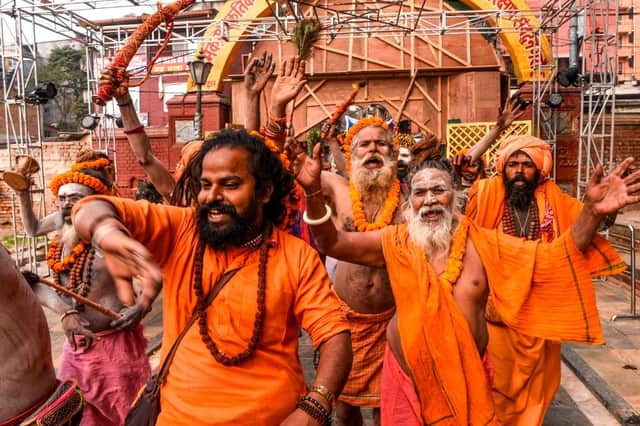When is Maha Shivaratri 2022? Date of Hindu festival, what it is, origins, traditions and how it’s celebrated
This article contains affiliate links. We may earn a small commission on items purchased through this article, but that does not affect our editorial judgement.


Maha Shivaratri is a solemn Hindu festival celebrated in honour of the God Shiva.
There is a Shivaratri once a month during the Hindu’s calendar’s 12 luni-solar months, which usually falls between the 13th night and 14th day.
However, Maha Shivaratri is unique in its own right.
When is Maha Shivaratri and how is it observed?
When is Maha Shivaratri?
Advertisement
Hide AdAdvertisement
Hide AdMaha Shivaratri is observed on the 13th night/14th night of the 12th Hindu month Phalguna, which falls between February and March in the Gregorian calendar.
This year, Maha Shivaratri commences on 1 March 2022.
The festival marks the end of winter and the arrival of summer, and translates into "the great night of Shiva".
This is a major observation in Hinduism and marks a remembrance of "overcoming darkness and ignorance" in life and the world.
It is very significant to the Shaivism tradition of Hinduism, which worships Shiva as its primary deity.
Advertisement
Hide AdAdvertisement
Hide AdDepending on where it falls in the Hindu calendar, Maha Shivaratri can last anywhere between three to ten days.
Why is Maha Shivaratri observed?
The Maha Shivaratri is mentioned in several Puranas (Hindu Literature) and presents different versions of this festival and referencing the icons of Shiva.
Different legends are attributed to Maha Shivaratri. One legend in Shaivism says Maha Shivaratri is the night when Shiva performs the heavenly dance of creation, preservation and destruction.
Another legend says Maha Shivaratri is the night when Shiva and Parvati (the Hindu Goddess of fertility and love) got married. A different legend suggests the annual occasion is a chance for Hindus to move past their past sins and restart on a virtuous path.
Advertisement
Hide AdAdvertisement
Hide AdMaha Shivaratri also marks the day when the first guru awakened his consciousness at the material level of existence.
How is Maha Shivaratri observed?
Maha Shivaratri is a solemn festival and is observed during the night, through chanting prayer, fasting and meditating. It’s a chance to remember overcoming darkness and ignorance of life and the world.
The festival includes a jaagaran - an all-night vigil consisting of prayers. Many Hindus offer fruit, leaves, sweets and milk to Shiva, and there is a focus on self-study and social harmony.
Some Hindu’s may visit a Shiva temple, or go on a pilgrimage to a Jyotirlinga, one of 12 traditional shrines in India devoted to Shiva.
Advertisement
Hide AdAdvertisement
Hide AdDue to the link to Shiva’s "heavenly dance", many Hindu’s gather together for lively dance festivals some of which can be seen for miles.
The festival is international and is celebrated around the world.
A message from the editor: Thank you for reading. NationalWorld is a new national news brand, produced by a team of journalists, editors, video producers and designers who live and work across the UK. Find out more about who’s who in the team, and our editorial values. We want to start a community among our readers, so please follow us on Facebook, Twitter and Instagram, and keep the conversation going. You can also sign up to our newsletters and get a curated selection of our best reads to your inbox every day.
Comment Guidelines
National World encourages reader discussion on our stories. User feedback, insights and back-and-forth exchanges add a rich layer of context to reporting. Please review our Community Guidelines before commenting.
